Dental Services We Provide
Preventative & Diagnostic Services
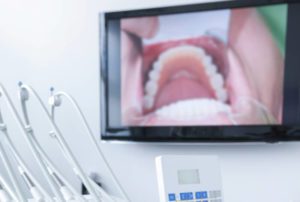
An intraoral camera is utilized to take a closer look into the patients’ mouth. This is helpful in both diagnosing and in patient education. The camera allows us to capture anything going on in the oral cavity from tissue conditions to cracked teeth and or fillings. These images are kept in the patients’ file as documentation and for future reference as well as for billing purposes and referrals.

Teeth cleaning (prophylaxis) is a procedure for the removal of tartar (mineralized plaque) that may develop even with careful brushing and flossing, especially in areas that are difficult to reach with a tooth brush. Professional cleaning includes tooth scaling, tooth polishing and sometimes debridement if too much tartar has accumulated. Various instruments and devices are used to loosen and remove deposits from the teeth.
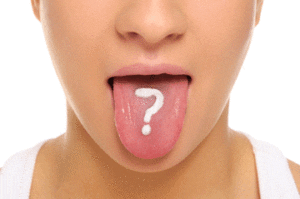
During a dental visit, the dentist can talk about the patients’ health history and look for signs of oral cancer (cancer of the mouth and/or throat). The screening will consist of a visual inspection of the lips, cheek lining, gums, front part of your tongue, floor of the mouth beneath the tongue and the hard palate also known as the roof of the mouth and palpation of the jaw and neck. Regular visits to the dentist can improve the chances of early detection, which is very important for chances of survival.

Dental radiographs (x-rays) are an important tool used to aid in the diagnostic part of regular dental exam. The dentist uses this information to accurately detect hidden dental abnormalities such as decay, fractures and infections that can otherwise go unforeseen.
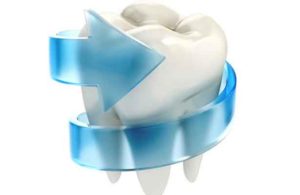
Fluoride helps prevent tooth decay by making the tooth more resistant to acid attacks from plaque bacteria and sugars in the mouth. It also can reverse early decay. In children under 6 years old, plays a big role in the development of permanent teeth. Fluoride also helps speed remineralization as well as disrupts acid production in already erupted teeth of both children and adults.
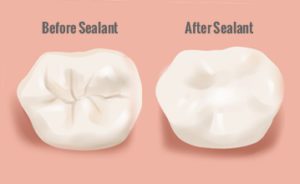
Dental sealants are a plastic based material used as a barrier to prevent cavities. It is applied to the chewing surfaces of the back teeth. It is bonded to the pits and fissures of the tooth where decay tends to occur most often. This then makes it easier for the tooth brush to remove plaque and food build up which otherwise would cause decay over time.
Restorative Dental Care

A partial denture is a custom made removable appliance for the mouth used to replace missing teeth. It can be made with a metal framework or with all pink (gum colored) plastic base material and can replace multiple teeth at a time. They can be worn throughout the day but need to be placed in water overnight. A full denture is used to replace all natural teeth in one. A full denture not only allows a patient to chew and speak easier, it also restores their smile and their facial appearance around the mouth.
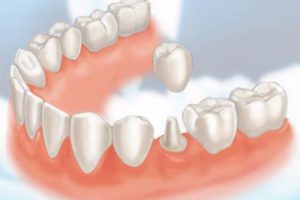
A crown covers the entire tooth surface. It can help strengthen a tooth with a large filling when there isn’t enough tooth structure remaining to hold the filling. Crowns can also be used to attach bridges or restore a tooth that’s broken. It is often used on a tooth with a rootcanal as well as to cover a dental implant. A bridge is three or more crowns fused together. It is often used to replace missing teeth. An artificial tooth bridges the gap where a tooth used to be connected to a crown over an existing tooth at each end. Both single crowns and bridges can be made.
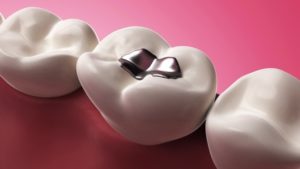
Dental amalgam is made from a combination of metals that include mercury, silver, tin, and copper. It is less expensive than other cavity-filling materials such as tooth-colored composites and gold fillings. The American Dental Association, U.S. Centers for Disease Control and Prevention, U.S. Food and Drug Administration and World Health Organization all agree that based on extensive scientific evidence, dental amalgam is a safe and effective cavity-filling material.
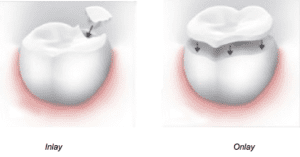
Gold fillings are also called inlays or onlays and are composed of an alloy of gold, copper and other metals. It is usually considered the most durable, lasting 20 years or more, but it is also the most costly. Gold fillings do require more than one office visit tocomplete because they require impressions to be sent out to a dental laboratory where the filling is manufactured.
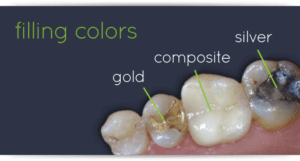
Composite or tooth-colored fillings, provide good durability in small- to mid-size fillings.They are a good choice for people who prefer that their fillings look more natural. Some studies show that composite fillings can be less durable and need to be replaced more often than amalgam fillings.
Cosmetic Dental Care

Clear aligners can be used to straighten teeth that are crowded and/or spaced out. A digital scan is done and sent to a lab, who then puts together the recommended treatment plan which will address your concerns and ultimately straighten out your smile. Clear aligners are custom made hard plastic trays that you wear for 2 weeks at a time. As you change trays every 2 weeks along the way, the teeth get moved little by little. The trays are worn day and night, only to be taken off to eat. You will continue to see us for follow up visits and to pick up the next set of trays every few weeks. We will continue to oversee your progress and help you accomplish the smile you always wanted.

Whitening is an optional treatment and consists of one visit where a gel is applied on the teeth under the supervision of the dentist. The gel used at chair-side is different than the one used by patients at home. The patient can expect to leave the office with his/her teeth a few shades lighter than before the treatment. That being said it is never known how much lighter the results will be in advance.
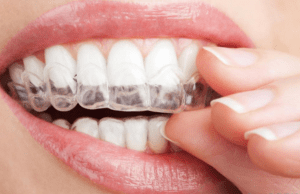
A custom made tray is fabricated then whiting gel is administered at home by the patient. The gel-filled tray is worn for 30 min on a daily basis for a period of 1-2 weeks. Irritation to the gums may occur. It is important to wipe excess gel from the gingival area. This method allows a patient to work on his/her own pace on whitening their teeth.

Veneers are used to cover stained, chipped or decayed teeth. It covers the front side of a tooth. Some enamel is removed to allow space for the veneer. Impressions are taken and sent to a lab where a thin custom-made shell-like design is made in a tooth color material. Then placed on patient’s tooth on a second appointment.
Oral Surgery

An extraction is a removal of a natural tooth. There are numerous reasons for a need of an extraction. It can be due to gross decay to periodontal disease to infection, and in some cases for orthodontic treatment.
Mouth Guards
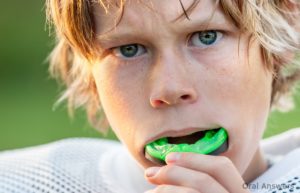
In our office we offer custom fitted mouth guards. An impression is taken of the upper teeth. A model of the teeth then is produced and utilized in making a custom fitted mouth guard. Mouth guards are very important when it comes to sports. They provide a cushion to the teeth and soft tissue of the mouth in case of any trauma to the face especially in contact sports. Mouth guards are available in numerous color options. Many times they can be matched to a school color.

Bruxism is the grinding of the teeth. A patient often is unaware of doing it. Some symptoms of bruxism are soreness of the jaw, dull headaches (around the neck and lower back of the head), sensitive/painful teeth as well as fractured teeth. There are many causes such as stress, anxiety and sleep disorders. There are two types of mouth guards we offer to help protect the teeth from bruxism: a soft plastic and a hard acrylic. Both are custom made to the patient’s upper teeth.
